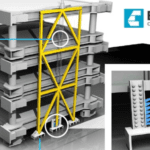Embracing Sustainability: Green Practices in Architectural Engineering Businesses
In the dynamic landscape of architectural engineering, sustainability has emerged as a driving force reshaping the industry’s ethos, practices, and innovations. The imperative to address environmental concerns, reduce carbon footprints, and create structures that harmonize with the ecosystem has propelled architectural engineering businesses towards integrating green practices at the core of their operations.
Sustainability as a Core Principle
Architectural engineering businesses are increasingly embracing sustainability as a guiding principle, recognizing the responsibility to design and construct buildings that minimize adverse environmental impacts. This shift involves rethinking traditional approaches, adopting eco-conscious design methodologies, and leveraging sustainable materials and technologies.
Designing for Sustainability
Sustainable architectural design focuses on optimizing energy efficiency, reducing waste, and promoting environmental health. Concepts like passive design, which utilize natural elements for heating, cooling, and lighting, are gaining traction. Integration of renewable energy sources, such as solar panels and wind turbines, further enhances buildings’ energy efficiency, reducing dependence on non-renewable resources.
Green Building Certifications and Standards
The emergence of green building certifications, such as LEED (Leadership in Energy and Environmental Design) and BREEAM (Building Research Establishment Environmental Assessment Method), has incentivized architectural engineering businesses to adhere to rigorous environmental standards. Achieving these certifications signifies a commitment to sustainable design practices, elevating a firm’s reputation and marketability.
Sustainable Materials and Technologies
The use of sustainable materials, such as recycled steel, reclaimed wood, and low-impact concrete, has gained prominence. These materials not only reduce the environmental footprint but also contribute to healthier indoor environments. Additionally, innovative technologies like green roofs, rainwater harvesting systems, and smart building management systems optimize resource utilization and enhance sustainability.
Lifecycle Assessments and Adaptive Reuse
Architectural engineering firms are increasingly conducting lifecycle assessments to evaluate a building’s environmental impact from construction to demolition. This holistic approach helps in identifying opportunities to minimize environmental burdens throughout a structure’s lifespan. Furthermore, the concept of adaptive reuse, repurposing existing structures to minimize waste and resource consumption, is gaining momentum as a sustainable practice.
Client Demands and Market Trends
The demand for sustainable buildings is on the rise, driven by heightened environmental awareness among clients and end-users. Green buildings offer benefits such as lower operating costs, healthier indoor environments, and a reduced carbon footprint, aligning with the preferences of environmentally-conscious consumers.
Overcoming Challenges and Embracing Opportunities
Despite the strides made in integrating green practices, challenges persist. These include the initial costs associated with green technologies, regulatory hurdles, and the need for skilled professionals well-versed in sustainable design. However, these challenges also present opportunities for innovation, collaboration, and technological advancements.
The Path Forward: A Sustainable Future
In conclusion, the integration of green practices in architectural engineering businesses is not merely a trend but a necessity. Embracing sustainability as a core value drives innovation, fosters collaboration, and positions firms as leaders in an increasingly environmentally-conscious world. By championing green practices, architectural engineering businesses can contribute significantly to creating a sustainable built environment, leaving a lasting positive impact on both society and the planet.






